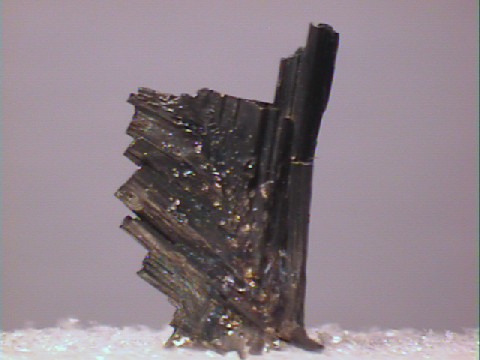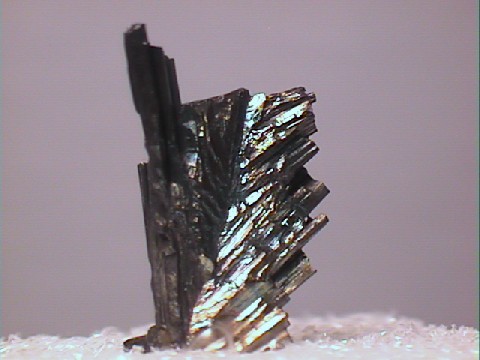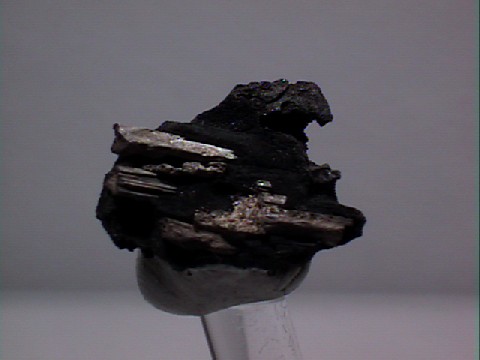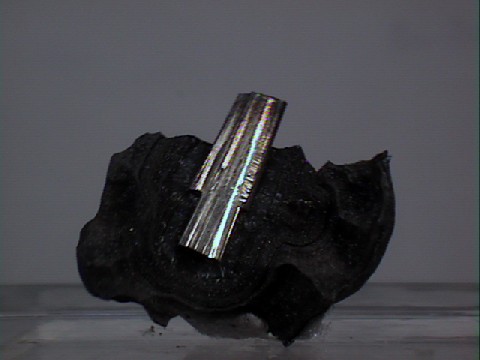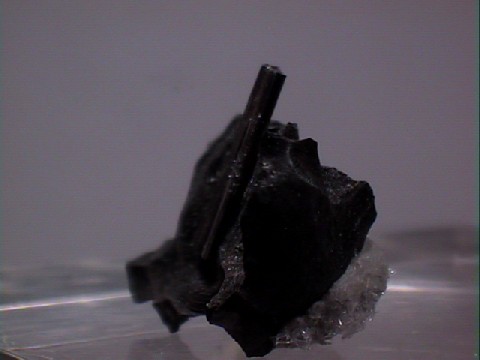 THE
MINERAL DYSCRASITE
THE
MINERAL DYSCRASITE
- Chemistry: Ag3Sb, Silver Antimonide
- Class: Sulfides
- Subclass: Antimonides
- Uses: Mineral specimens and as a minor ore of silver.
Specimens
Dyscrasite is a very interesting, rare and beautiful silver mineral that is popular with collectors who love to collect silver bearing minerals especially micromounted specimens. Dyscrasite is actually an alloy of the silver and antimony which means the atoms of silver and antimony are combined with metallic bonds instead of ionic or covalent bonds. Alloys are usually placed in the Elements Class. But dyscrasite is placed in the Sulfide Class because antimony is really a semi-metal and not a metal like silver.
Dyscrasite forms intricate and strikingly beautiful crystals and crystal aggregates. Its metallic silver-white color rivals the beautiful color of silver itself. The crystals, although usually quite small, are never-the-less quite detailed and reminiscent of something out of this world. Forms include arborescent (branching) and cyclic pseudo-hexagonal twinned crystals. Dyscrasite is locally an important ore of silver.
PHYSICAL CHARACTERISTICS:
- Color is silver-white.
- Luster is metallic.
- Transparency: Crystals are opaque.
- Crystal System: Orthorhombic; 2/m 2/m 2/m.
- Crystal Habits include intricate arborescent and prismatic striated crystals. Cyclic twinned crystals are pseudo-hexagonal (six-sided) prisms and pyramids, but these are especially rare. Commonly found massive.
- Cleavage: Not discernible.
- Fracture: Hackly.
- Hardness is 3.5 - 4
- Specific Gravity is 9.4 - 10 (very heavy for metallic minerals).
- Streak is silver.
- Other Characteristics: Specimens will tarnish to a yellow or black color with exposure to light.
- Associated Minerals include calcite, silver and silver ore minerals.
- Notable Occurrences include Wolfach and the Harz Mountains of Germany; Pribram, Czech Republic; Broken Hill, New South Wales, Australia; Pima and Santa Cruz Counties, Arizona, USA; Atacama, Chile and Cobalt, Ontario, Canada.
- Best Field Indicators are crystal habit, streak, density, color, tarnish and luster.

